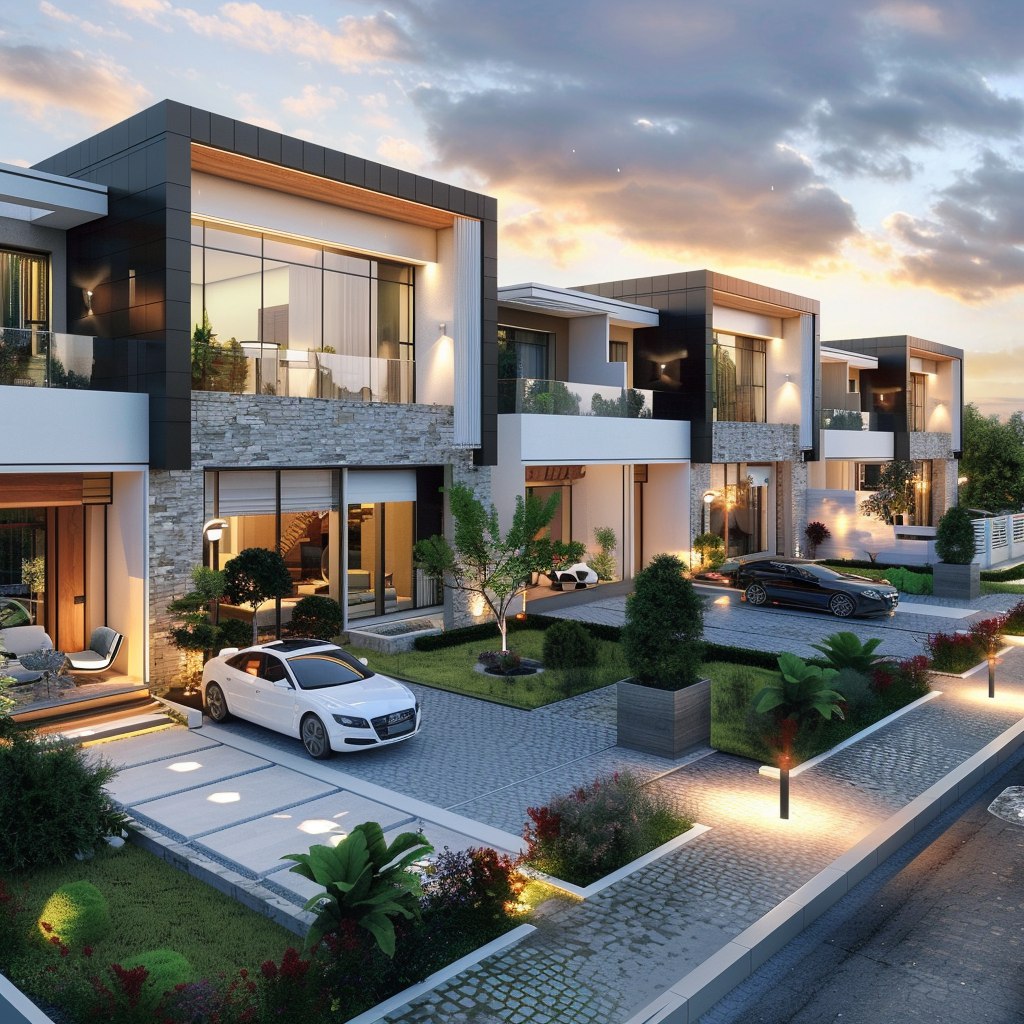Architectural visualization, often abbreviated as Archviz, stands as a pivotal discipline that bridges the gap between the conceptual and the tangible in the world of design and construction. It encompasses the creation of photorealistic or stylized imagery and animations that showcase architectural designs, be they unbuilt, proposed, or even existing structures. In essence, Archviz provides a compelling visual narrative, allowing architects, developers, and clients to experience a space long before the first brick is laid.
The Evolving Landscape of Archviz
The field of architectural visualization has undergone a dramatic transformation, fueled by advancements in computer graphics technology. Early iterations relied heavily on manual drafting and rudimentary rendering techniques, resulting in imagery that, while informative, lacked the realism and visual appeal of contemporary Archviz. Today, sophisticated software packages like 3ds Max, Cinema 4D, and Blender, coupled with powerful rendering engines such as V-Ray, Corona Renderer, and OctaneRender, enable artists to create stunningly realistic and immersive visualizations. Real-time rendering technologies, driven by game engines like Unreal Engine and Unity, are also gaining traction, offering interactive and dynamic experiences.
The Pillars of Effective Architectural Visualization
Several core principles underpin effective architectural visualization. Firstly, Accuracy is paramount. The visualization must faithfully represent the architectural design, adhering to precise measurements, material specifications, and spatial relationships. Secondly, Detail is crucial for creating a convincing sense of realism. Attention to minute details, such as textures, lighting, and environmental elements, can significantly enhance the believability of the imagery. Thirdly, Composition and Storytelling play a vital role in conveying the intended atmosphere and function of the space. Thoughtful camera angles, lighting schemes, and the inclusion of human elements can evoke emotions and tell a compelling story about the architectural design.
Beyond Aesthetics: Applications and Benefits
Architectural visualization transcends mere aesthetics; it serves a multitude of practical purposes across various stages of the design and construction process. During the Conceptual Design Phase, visualizations can aid in refining design ideas, exploring different material options, and evaluating the overall aesthetic impact of the proposed structure. In the Marketing and Sales Phase, high-quality renderings and animations are instrumental in attracting potential investors, securing funding, and pre-selling units in real estate developments. During Construction, visualizations can be used for coordinating different trades, resolving potential clashes, and ensuring that the final product aligns with the design intent. Furthermore, Archviz provides a valuable tool for Public Engagement, allowing communities to visualize and understand the impact of new developments on their surroundings.
The Future of Architectural Visualization
The future of architectural visualization https://provisual.pro/3d-architectural-visualization-price/ is poised for further innovation and disruption. The integration of Artificial Intelligence (AI) and Machine Learning (ML) is already automating certain tasks, such as scene population and material generation, freeing up artists to focus on more creative aspects. Virtual Reality (VR) and Augmented Reality (AR) technologies are offering increasingly immersive and interactive experiences, allowing users to virtually walk through and interact with architectural designs in real-time. The growing demand for Sustainability is also influencing the field, with visualizations being used to analyze and optimize energy efficiency, daylighting, and other sustainable design elements. As technology continues to evolve, architectural visualization will undoubtedly play an even more crucial role in shaping the built environment of tomorrow.
Ethical Considerations in Architectural Visualization
While Archviz provides a powerful tool for showcasing architectural designs, it is important to acknowledge the ethical considerations that accompany its use. Overly idealized or misleading visualizations can create unrealistic expectations and potentially misrepresent the true nature of a project. Transparency and honesty are paramount. Visualizations should accurately reflect the design, materials, and environmental context, and should not be used to deceive or mislead potential clients or the public.
The Skillset of an Architectural Visualization Specialist
Becoming a skilled architectural visualization specialist requires a diverse skillset that blends artistic aptitude with technical proficiency. A strong understanding of Architecture and Design Principles is essential for accurately representing architectural designs. Proficiency in 3D Modeling Software is crucial for creating detailed and realistic models. Expertise in Rendering Engines is needed to generate photorealistic or stylized imagery. Understanding of Lighting Principles is critical for creating visually appealing and convincing scenes. Finally, strong Communication and Collaboration Skills are necessary for effectively communicating with architects, designers, and clients. The ability to interpret architectural drawings, understand design intent, and translate complex ideas into compelling visuals is paramount for success in this field.
